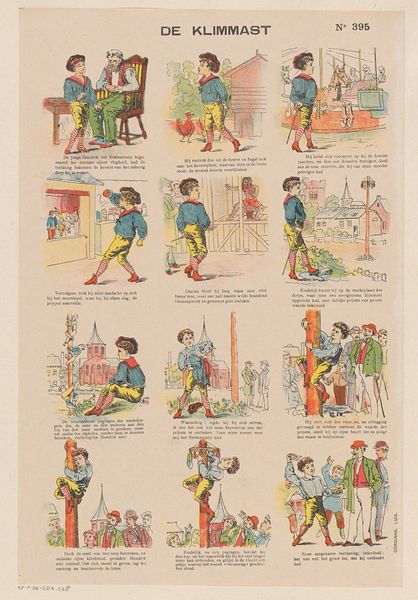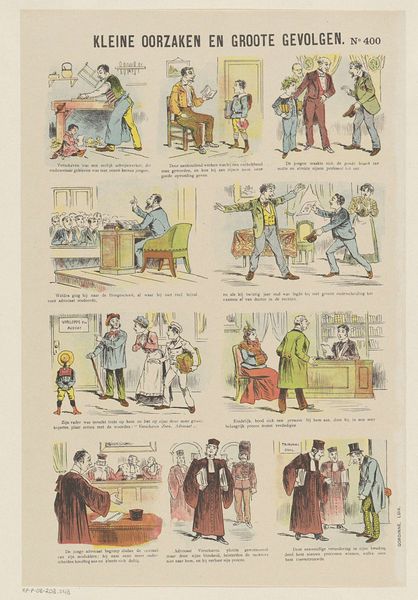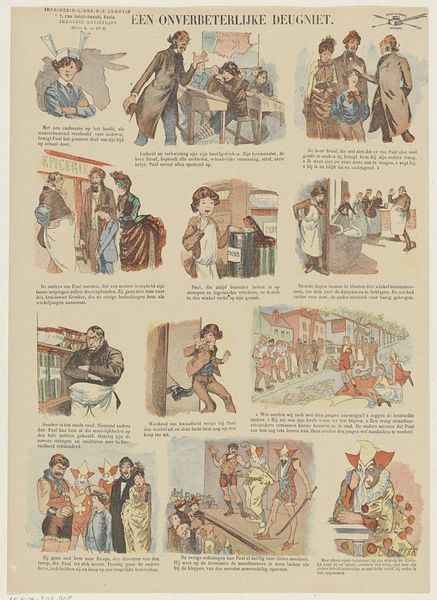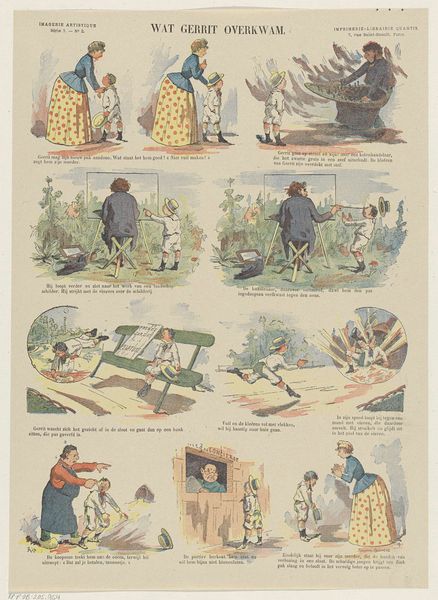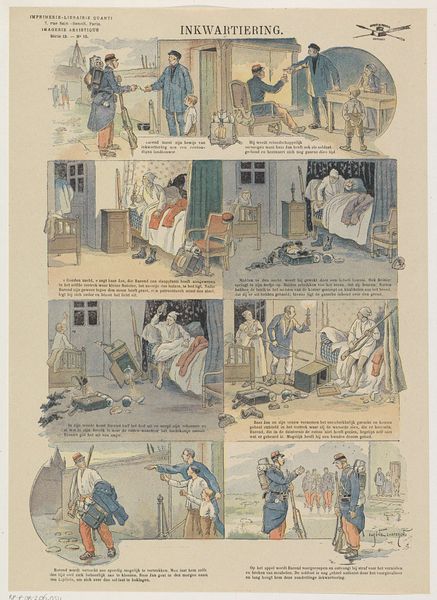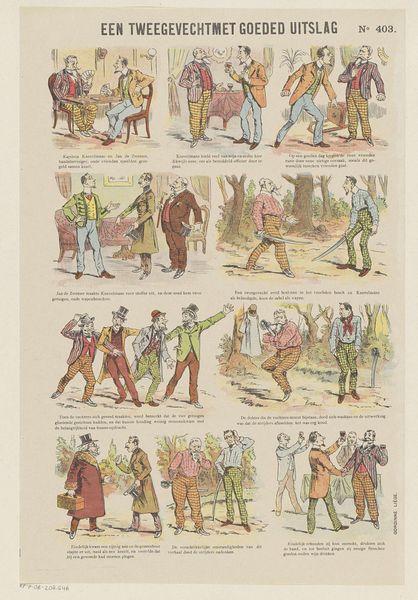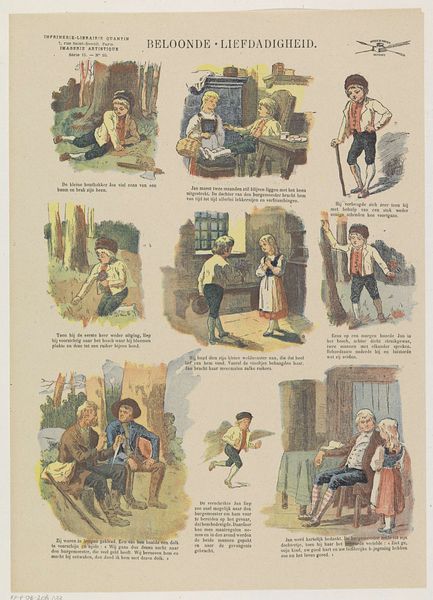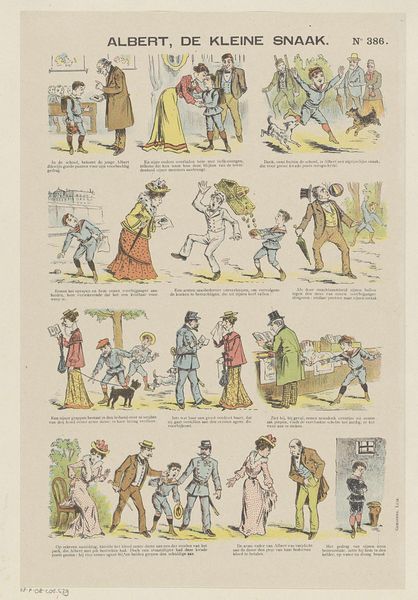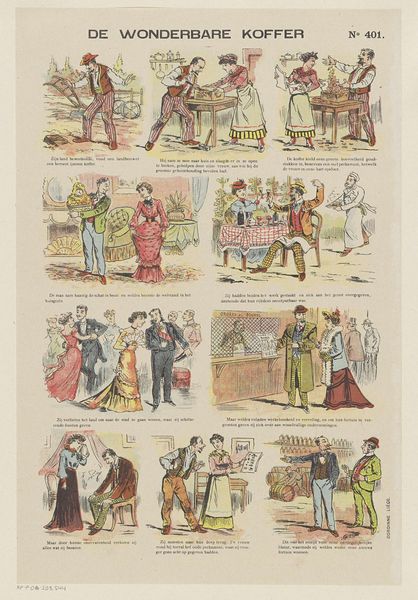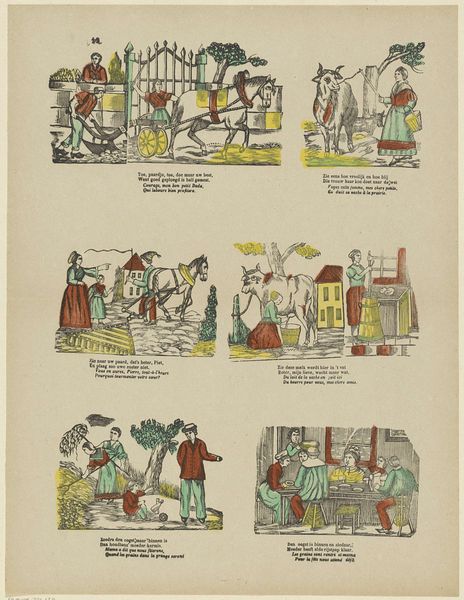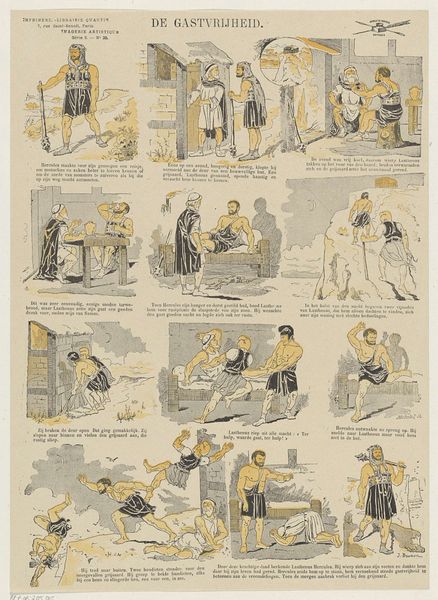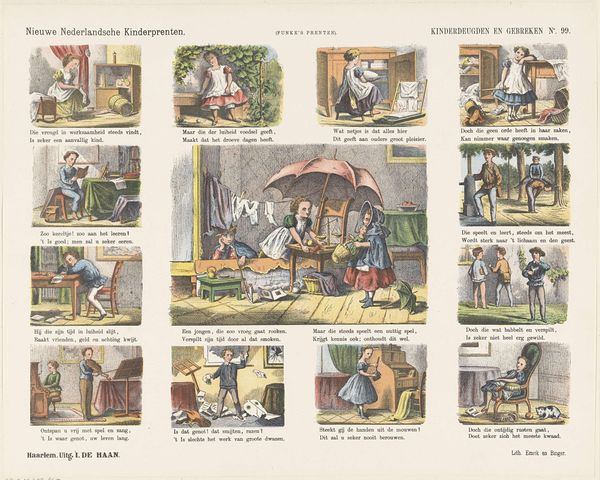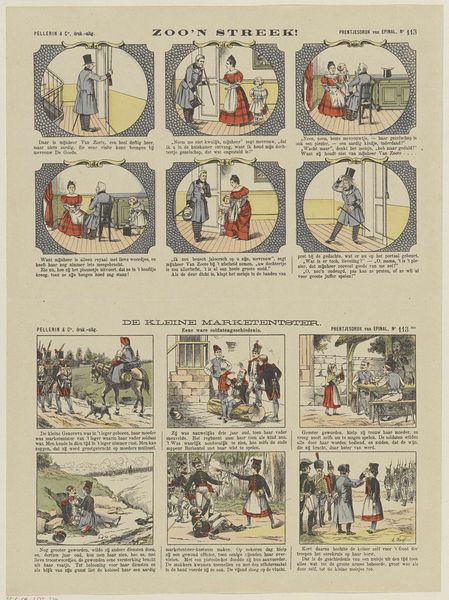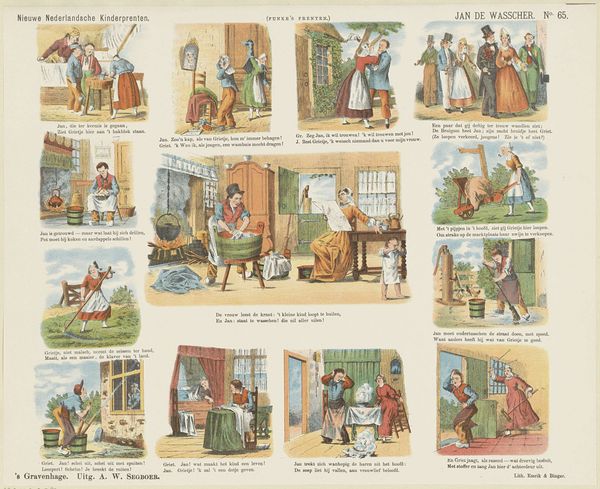
painting
#
narrative-art
#
painting
#
watercolour illustration
#
genre-painting
Dimensions: height 368 mm, width 266 mm
Copyright: Rijks Museum: Open Domain
Editor: Here we have Hermann Vogel’s "Het verdiende antwoord," which translates to "The deserved answer," created sometime between 1876 and 1890. It looks like a watercolour illustration, telling a story panel by panel. The colour palette is light and it all feels very whimsical. What's your interpretation of the narrative elements within this work? Curator: I see a pointed commentary on class, hierarchy, and justice delivered with visual storytelling. Think about it: we're presented with a narrative, a visual sequence, unfolding much like a comic strip, suggesting a sequential power dynamic. The man on horseback, ostensibly a figure of authority, moving through these scenes - what kind of message do you think Vogel is sending? Editor: It's interesting that you see him as a figure of authority. At first glance, the figure felt more like a comedic character to me. But now, thinking about the panels together, it seems his journey and interactions expose societal tensions in late 19th century life. Curator: Exactly! We see what happens when someone presumably "lower" on the social scale challenges authority, leading to that "deserved answer". Do you think that justice is served, or do we simply reinforce power structures? How might Vogel be using humour to mask social criticism, or perhaps soften it? Editor: I hadn't considered how the artist's tone shapes the reading. Perhaps that final scene of him riding away is not a triumphant departure, but one of isolation? I think understanding this piece benefits from exploring the period's anxieties. Curator: Precisely. The power dynamics reflected are as important as what’s depicted. Understanding the cultural environment really enables us to consider those elements more broadly, and perhaps not at face value.
Comments
No comments
Be the first to comment and join the conversation on the ultimate creative platform.
